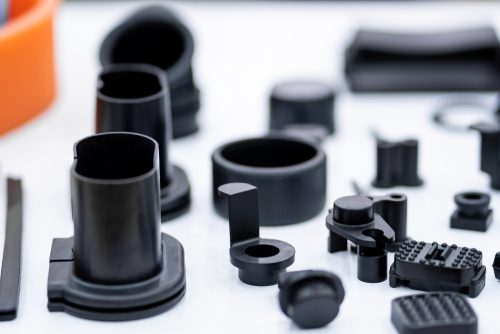While injection molding and 3D printing are both contemporary technologies that can be used together, some projects are more suited to one form of production over the other. The main differences lie in the production process; whereas 3D printing involves additive manufacturing technologies, injection molding does not. 3D printing works by layering materials and solidifying them, while injection molding happens when a liquid material is injected into a mold and then cooled. Each method has its own pros and cons, and either one can be an excellent choice depending on the needs of a project. Additionally, certain projects may require using both production types; they can often work together.
Methods of Production
As previously mentioned, 3D printing and injection molding are different processes. 3D printing operates by layering a material, such as nylon, and then solidifying it with a laser or other hardening agent. After the printer has finished a run, it is unpacked and post-processed, which involves cleaning, dyeing, and other details.
In contrast, injection molding involves a much more complex production process. Small pellets of raw material, usually a form of plastic, are emptied from a hopper into a long tube with a reciprocating screw which is heated and continuously rotates. The pellets tumble around the screw and soon melt, partly due to the heated screw and the friction of the pellets on the surface of the tube. Once the pellets become molten and liquid, an injector pin pushes the material into the mold cavity, which is clamped and tightly held in place. The mold soon cools, and the piece is dropped into a collector bin so the process can begin again. Both methods are designed to operate smoothly, and both have their intended markets.
Injection Molding vs 3D Printing
Injection molding and 3D printing each target different kinds of projects. Injection molding processes usually work best for large orders, typically over 500 pieces per run. This is due not only to the cost of the mold itself, which can be several thousand of dollars, but also to the additional time involved in designing, create, and acquire the mold. However, once the mold is obtained, injection molding works fast, producing a single part in as little as 8 seconds. This means injection production is usually only profitable for large-scale orders, especially where all the parts must be identical. Additionally, injection molded parts are generally stronger than 3D printed pieces, depending on the design and materials.
On the other hand, 3D printing production is generally faster, cheaper, and more cost-efficient than injection molding, especially for smaller orders. If changes are encountered along the production process, they are easy to adjust for with 3D printing, while it is nearly impossible to fix a mold after it is completed. With 3D printers, no molds are required, which cuts time for designing and acquiring that extra piece. On top of that, 3D printed orders almost always have a faster turnaround time than that injection molding, making 3D manufacturing appealing to many customers.
While both methods have their benefits and drawbacks, they each target a specific market and need and can be a great option.
Working Together
Interestingly, the one drawback with injection molding can be fixed with 3D printing. Many companies are discovering ways to produce molds with 3D printers, cutting down on the cost, time, and difficulties of acquiring injection molds. Currently, 3D printed molds are usually made from photopolymers and can be ideal for injection molding runs from 10-1000 parts. Depending on the complexity and material of an injection molding order, 3D printing a mold can save money, time, and trouble for many customers.
In summary, injection molding is the ideal route for those looking for fulfillment on orders over 500 parts, where all the pieces need to match and are produced for a low price per piece. However, 3D printing can be a better way to go if you need a smaller order fulfilled quickly. Additionally, both processes can work together when the mold required for injection is made using a 3D printer. Each method has its pros and cons, but either can be perfect in the right circumstances. If you want to complete an injection molding project with ease and simplicity, check out Jawtec’s Injection Molding page!

Thanks for this summary – I’m finding that as 3d printing costs drop and the quality increases, this pushes the tipping point between 3d printing and injection molding. That is only going to get better.